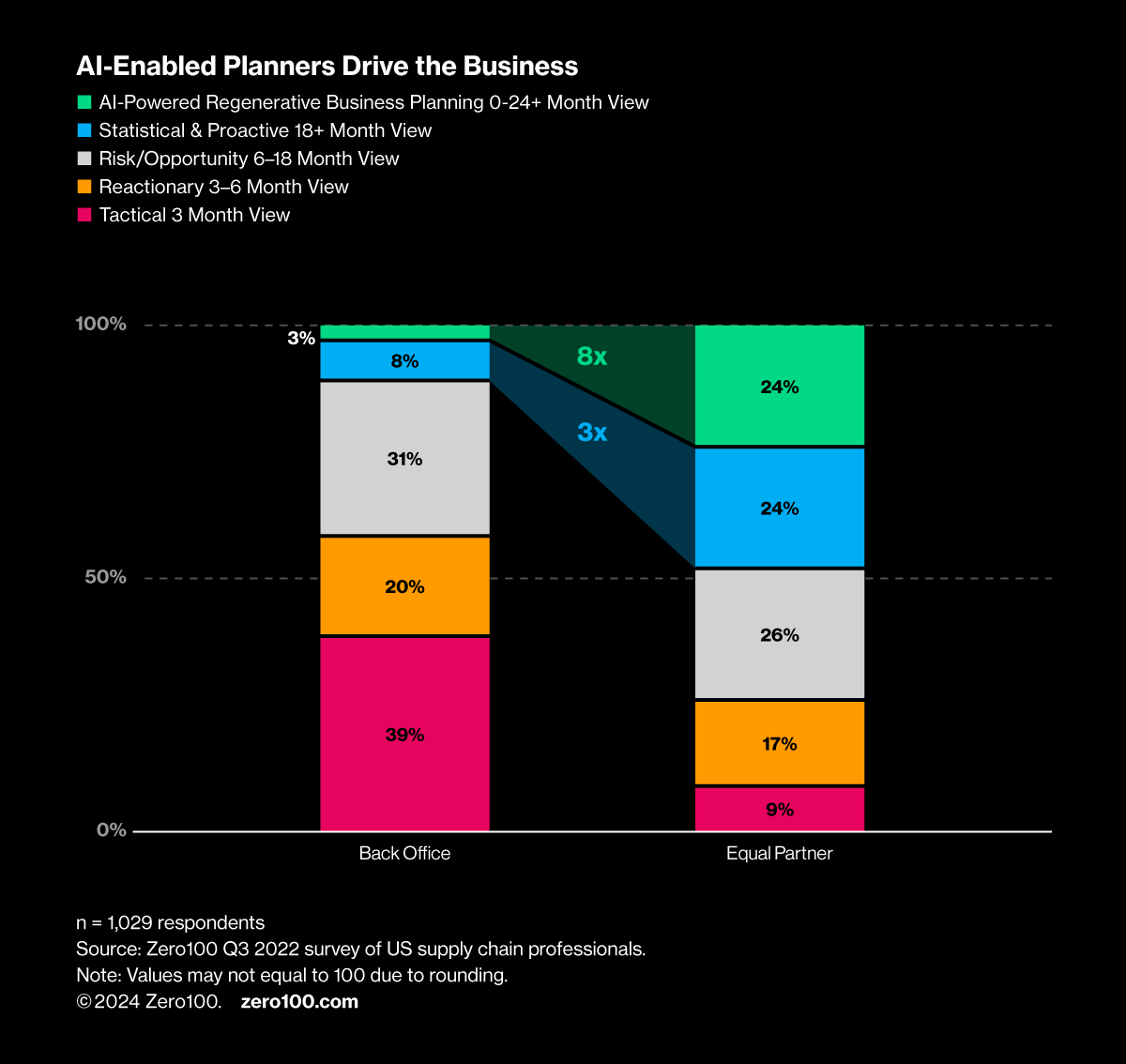

Use AI-Enabled Planning to Take Supply Chain from Support Function to Strategic Partner
Transformation of planning can elevate supply chain from a back-office support function to strategic partner. Furthermore, planners making smart use of AI/ML are 8x more likely to secure a seat at the boardroom table than those who aren’t.
Key Takeaways
-
1
Companies that see supply chain as a back-office support role have less evolved digital planning capabilities.
-
2
Supply chain leaders are 8x more likely to be seen as equal partners to a business rather than as a back-office role when they have AI-powered regenerative business planning (RBP) as opposed to less evolved planning capabilities.
-
3
Despite supply chain leaders primarily viewing AI as a strategic tool within the planning function, only 10% of demand planning and forecasting job posts in supply chain mention AI skills.
In a recent survey, we asked 1,000 supply chain leaders to characterize how their business counterparts view supply chain - ranging from a back-office function ("not a strategic partner") through to equal partner in corporate strategy and decision-making. The results show that those most advanced with AI-backed solutions are also most integrated into business strategy as an equal partner.
Implemented and operated correctly, AI has the potential to create a paradigm shift within the planning function, contributing to the solving of challenging business problems as well as strategic future planning. Beyond forecasting, AI and ML are critical to increasing learning capacity – the ability to regenerate insights automatically based on each planning month. By incorporating this transformative tool into business strategy, you can improve the efficiency of your planning operations immediately while seeing continuous improvement and adaptation as systems evolve. Our analysts captured over 350 AI use cases within supply chain from 2019 to the present, showing that many companies are actively investing and experimenting already. Though only 20% of CEOs mentioned AI in the press in 2023, we believe that the opportunity exists for supply chain to claim ownership of AI as a primary solution across the enterprise in 2024, which will lead to increased involvement in overall business activities.
In the survey mentioned above, to uncover the relationship between being seen as an equal partner to the business and planning capabilities, we asked respondents who voted one way or the other (back-office or strategic partner) to quantify their digital planning capabilities, from highly evolved (AI-powered and regenerative with a 0-24+ month view) to, on the other end of the spectrum, tactical, with a 0–3-month view. 24% of those who answered equal partner to the first question said they have a highly evolved, AI-powered RBP. The full results of the survey are shown in the chart below and indicate that having a highly evolved AI-powered RBP capability increases the likelihood of the supply chain function being seen as an equal partner by a factor of eight.

In a similarly large majority, planning teams that proactively engage in statistical planning over an 18+ month period make it three times more likely that supply chain will be regarded as an equal partner to a business rather than as a back-office function merely supporting the business. On the other hand, more tactical and reactionary shorter-term planners (2–6-month view) overwhelmingly relegate supply chain to a back-office support function. This reflects the importance of integrating AI earlier on, building it into planning operations to maximize output and efficiency.
AI-enabled planning, for which there are many implementation opportunities, has the power to cause a real change within the function while also elevating the role of supply chain within the business. To successfully move the needle on both of these fronts, you must build up your AI/ML capabilities. However, after analyzing job descriptions from 174 companies, we found that while 38% of demand planning and forecasting roles mention digital skills, only 10% specify AI skills.
Executives and their teams must focus on increasing AI/ML literacy by upskilling staff and seeking out these skills among new hires. Hire those who demonstrate the ability to isolate core digital transformation areas, assess how AI can be integrated most effectively, and, ultimately, know how to ask the right questions to maximize productivity and results.
To see a different data cut or to dig deeper into this topic, reach out to our Head of Research Analytics, Cody Stack, at Cody.Stack@zero100.com.
Methodology
Zero100’s proprietary data and analytics are a combined effort between our data scientists and research analysts. We provide data-first insights matched with our own research-backed points of view and bring this analysis to life via real-world case examples being led by supply chain practitioners today.
For this study, we surveyed 1,029 supply chain executives and looked at 2.4 million LinkedIn job posts from 174 B2C and B2B companies. Our analysis categorizes listings based on mentions of specific digital skills within job titles and descriptions.